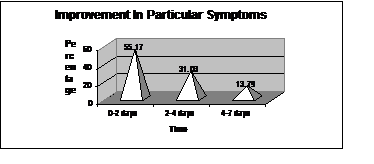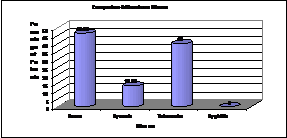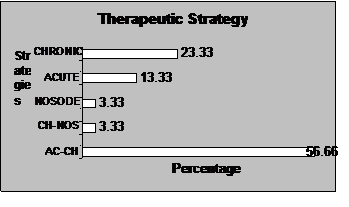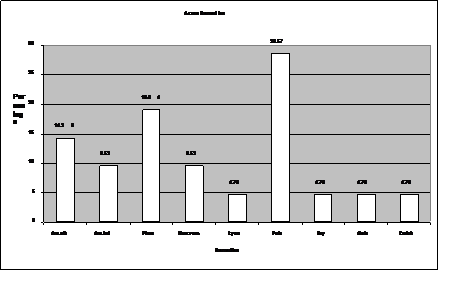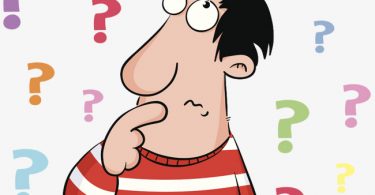Reprinted with permission from the Indian Journal of Applied Homoeopathy where it first appeared. https://www.jimshomeocollege.com/ijah-publications/
Introduction:
Acute viral Hepatitis is diffuse liver inflammation caused by specific hepatotropic viruses.
Etiology:Acute viral Hepatitis is caused by 5 viruses
- Hepatitis A (HAV)
- Hepatitis B (HBV)
- Hepatitis C (HCV)
- Hepatitis D (HDV)
- Hepatitis E (HEV)
Characteristics of viruses:
| Characteristics of Virus | HAV | HBV | HCV | HDV | HEV |
| Nucleic acid | RNA | DNA | RNA | – | RNA |
| Serologic diagnosis | Igm anti-
HAV |
HBsAG | Anti-HCV | Anti-HDV | Anti-HEV |
| Mode of transmission | Fecal-oral | Blood | Blood | Needles | Water |
| Incubation period (days) | 15-45 | 40-180 | 20-120 | 30-180 | 14-60 |
| Epidemics | Yes | No | No | No | Yes |
| Chronicity | No | Yes | Yes | Yes | No |
| Liver Cancer | No | Yes | Yes | Yes | No |
Clinical picture:
Acute infection tends to develop in predictable phases
- Incubation period: The virus multiplies and spreads without causing symptoms
- Prodrome (Pre-icteric period): nonspecific symptoms occur in this phase which include profound anorexia, nausea, vomiting, and often fever or right upper quadrant abdominal pain. Patient may also experience urticaria or arthralgia in HBV infection.
- Icteric phase: After 3 -10 days the urine and jaundice follow. Systemic symptoms often regress. Patient feels better despite worsening jaundice. Liver is usually enlarged and tender, but the edge remains soft and smooth. Mild splenomegaly occurs in 15-20 %of patients. Jaundice usually peaks within 1 – 2 weeks.
- Recovery phase: During this 2-4 weeks period, jaundice fades. Appetite usually resolves after the first week of symptoms.
- Acute viral Hepatitis usually resolves spontaneously within 4-8 weeks after symptom onset.
- Anicteric Hepatitis (Homeopathy for Hepatitis A) occurs more often than icteric Hepatitis in patients with HCV infection and in children with HAV infection. Typical manifestations include flu like illness.
- Recrudescent Hepatitis is characterized by recurrent manifestations during the recovery phase.
- Manifestations of cholestasis usually develop during the icteric phase which cause prolonged jaundice, elevated alkaline phosphatase and pruritus, despite regression of inflammation.
Diagnosis:
- Liver function tests: hyper bilirubinemia with elevated SGOT and SGPT
- Viral serological test
- PT INR
Management:
- In cases of acute viral hepatitis main stay of management is mainly in providing the supportive care
- Prevention:
- Maintaining good personal hygiene prevents fecal oral transmission
- Barrier protection
- Avoidance of contact with infected person’s discharges such as saliva, semen, blood
- Screening all blood donors to prevent transmission via blood
- Avoid sharing of needles and syringes
HOMEOPATHIC APPROACH IN CASES OF VIRAL HEPATITIS
Case Series study to formulate homoeopathic management of Acute Viral Hepatitis.
A retrospective study carried out in a homogenous population where male: female ratiowas 46:58 and adult: pediatric population was equally divided. subjects reported with fever, dark urine, skin itching, vomiting, abdominal pain, nausea and loss of appetite. Reporting was as early as day 2 and as late as 3 weeks from the onset of illness. Serum SGOT and SGPT levels ranged from 200 to 1500 and above of IL/L. In this study the results were quantitatively and qualitatively significantly different from conventional treatment in which the average time for complete recovery is six to eight weeks.
Following are some of the salient observations in this study:
Recovery Chart of patients on homeopathic treatment: All patients recovered in less than 4 weeks. 83 % in first two weeks and the rest 17 % in 4 weeks.
Time taken for improvement in general symptoms: 89.6 % recovered in 0 to 2 days and the rest 10.3 % between 2 to 4 days
Improvement in particular symptoms was as follows; 0-2 days 55.17 % patients improved, 2-4 days 31.03 % and 13.79 % in 4 to 7 days.
Time taken for Serum Bilirubin to reach normal:
| 1 week | 2 weeks | 3 weeks | 4 weeks | 7 weeks |
| 13.79% | 55.17% | 6.89% | 17.24% | 3.44% |
To understand the how and why of the results obtained, sample cases from the above mentioned study are grouped together based on the stage of diseases, type of homeopathic characteristic symptoms available, assessment of susceptibility and miasm.
CASE 1
An 8 year old female presented with complaints of fever for last 2-3 days which started after eating sour food and 4-5 episodes of vomiting. Vomiting is aggravated immediately after eating or drinking. The child has diminished appetite, increased thirst for small quantity of water frequently, dark yellow coloured urine and weakness associated with the chief complaint.
General physical examination:
Temperature: 99 º F, Pulse rate: 90/min, Sclera: Icterus ++
Systemic examination:
Per abdomen: soft, non-tender, Liver: 1 finger palpable
Investigations:
Haemoglobin 11.6, Total WBC Count 9200, Neutrophils 80, Lymphocytes 12, Monocytes 0, Eosinophil 0, Platelet count: adequate CUE: Bile salts: positive, Bile pigments: positiveSGPT: 1570 IU/L, SGOT: 950 IU/L, S. Bilirubin (Direct): 3.7 mg %, S Bilirubin (Indirect): 1.1 mg%
Clinical diagnosis:Acute Viral Hepatitis
Structure:
Diffuse hepatocyte inflammation with mononuclear cells & neutrophil infiltration acidophilic degeneration and hepatocellular necrosis with simultaneous regeneration of hepatocyte
Function:
Rapid rise in SGOT, SGPT, Serum Bilirubin
Equally rapid decline
Increase Serum bilirubin due to altered Bilirubin metabolism
Bile salts- positive, Bile pigments- positive
SGPT- 1570, SGOT- 950
- Bilirubin Direct- 3.7, S. Bilirubin Indirect- 1.1
Form:
Mild fever, Vomiting < immediately after eating, Dark urine, Thirst increased for small quantity and often & Weakness.
Susceptibility:
Pace: Sudden onset, Fast progress
Pathology: Acute congestive and exudative inflammation of liver with early impeding degeneration Structural reversible stage
Repertorial approach:Boenninghausen
Presence of characteristic causative modality, physical general concomitants and characteristic physical particulars i.e. aggravating modalities in the totality indicate the above approach.
Repertorial totality:
- Generalities: Food-Sour-aggravation
- Generalities: weakness, enervation-fever during
- Stomach: thirst small quantity for often
- Stomach: vomiting food eating; after immediately
- Stomach: vomiting drinking immediately
Remedy selection:Arsenicumalbum
Potency: 200 c
Repetition: 4 times a day
Summary of follow up:
Patient showed improvement in her generals, her weakness & vomiting reduced and later stopped in 2 days. Intake of fluids & later solid food improved within 1 week. Fever subsided and patient became asymptomatic in 2 weeks.
CASE 2
A 4 years old male patient presented with complaints of nausea & vomiting for last 2 days which got aggravated after drinking and eating, and ameliorated after vomiting. He experienced 2-3 such episodes in a day. Patient also experienced associated right hypochondriac pain, ineffectual urge for stool, decreased thirst and bitter taste in mouth.
Physical generals:
Appearance: Lean, Thin
Craving: Sweets2, Icecream2,Cold drinks2
Thermal state: Chilly
Perspiration: Head-profuse
Mental symptoms:
- Obstinate
- Fear: dark, ghost
Very active
Irritable – dull hair, grinding teeth
General physical examination:
Temperature: Afebrile, Sclera: Icterus+
Systemic examination:
Per abdomen: Soft, tenderness in right hypochondrium, Liver 1 finger palpable
Investigations:
CUE: Bile salts- positive, Bile pigments-positive
Clinical diagnosis: Infective hepatitis
Susceptibility:
- Pace: Sudden rapid onset, Moderate progress
- Pathology: Acute inflammation, Icteric phase with congestion, No fever
- Structural reversible change
- Characteristic symptoms present
Repertorial approach:Boenninghausen as there are characteristic physical general concomitant and characteristic physical particular aggravation and amelioration.
Repertorial totality:
- Rectum: constipation: ineffectual urging
- Stomach: thirstlessness
- Mouth: taste bitter
- Stomach: nausea eating Agg:after
- Stomach: nausea Drinking Agg: after
- Abdomen: Pain: general:vomiting: after amelioration
Remedy selection: Nux vomica
Potency: 30
Repetition: 4 times a day
Summary of follow up:
Patient started to show improvement in his complaints and his nausea and vomiting stopped. His ineffectual urge for stool, bitter taste in mouth as well appetite improved within 2 days. His constitutional medicine was Calcarea phosphorica. He was prescribed a single dose of Calc phos 200 after stopping Nux vomica which was administered for 4 days.
MANAGEMENT STRATEGY 1
- There is characteristic form available with good characteristic symptomatology
- The pace of the disease is rapid
- The pathology is structural reversible
- Susceptibility falls in moderate to high zone with mild to moderate deviation
The miasm which predominates is psora to tubercular
Acute remedy is used in multiple doses
The strategy used is acute followed by constitutional
The posology used in acute is moderate, in frequent repetition
- Recovery is fast within 2-4 days
CASE 3
A 22 years old female presented with complaints of mild to moderate degree of fever for last 6 days. She also had diminished appetite, itching all over the body, dark yellow coloured urine and pale white stools associated with the chief complaint.
Physical generals:
- Appearance: lean
- Perspiration: Moderate, no odour, non-staining
- Menstrual history: Regular cycles, Motion sickness: Nausea, Vertigo
- Sun: Uncomfortable
- Thermal state: Chilly
Past history: Chicken pox
Family history: Father: Hepatitis General physical examination:
Temperature: 99º F, Sclera: Icterus +,Pallor +
Systemic examination:
Per abdomen: soft, liver 1 finger palpable Investigations:
Haemoglobin 9.61 gm%,
Serum bilirubin 9.53 mg%
CUE: Bile salts-positive, Bile pigments-positive
Clinical diagnosis: Infective Hepatitis- Cholestatic
S-F-F:
Structure:Liver architecture disturbed due to , Bridging necrosis, Confluent necrosis Ballooning of hepatocyte and obstruction of bile flow & bile stasis
Function: Obstruction of bile flow, Mal absorption of fat, Decreased excretion of cholesterol. Increased Indirect Bilirubin: 9.53 mg% Form: Deep jaundice, Pale stool, Skin itching
Susceptibility assessment:
Pace: gradual onset, slow progress
Pathology: Acute inflammation cholestatic stage Characteristic symptoms: Absent Sensitivity:
- Mind: High characteristic emotional state, behavioural symptoms Nerves: Moderate
Stage of disease: Structural reversible stage
Totality:
Haughty
Egoistic
Dominating
Contemptuous
- Dissatisfied
- Indifferent
- Weepy
- Craving sweet
Repertorial approach: Kent; There are characteristic mental symptoms and physical generals in the totality.
Remedy selection: Platina
Potency: 200 c
Repetition: one single dose
Summary of follow up:
There was marked improvement in her symptoms. Her fever subsided, appetite improved, icterus settled as well as her urine and stool colour returned back to normal within 1 week. Serum bilirubin levels became normal within 1 week.
CASE 4:
A 14 years old female presented with complaints of fever, headache, nausea, vomiting and loose motions for last 20 days. She experienced headache which got aggravated after eating, nausea got aggravated after eating, vomiting was aggravated during morning & evening. These symptoms were associated with decreased appetite, dark yellow coloured urine, white stools, and yellow sclera and on the mental plane patient experienced irritability, quarrelsome nature, no desire to talk, decreased thirst and repugnance to food which she was fond of earlier.
Physical generals:
- Appearance: Lean, tall, stubborn look on face, body structure lacking feminine fitness
- Perspiration: Face, Nose
- Craving: Sweets
- Aversion: Milk3, Buttermilk2
- Menstrual history: Cycles irregular
- Thermal state: Chilly
General physical examination:
Temperature: 99º F, Pulse: 104/min, Sclera: deep yellow
Systemic examination:
Per abdomen: soft, non-tender, Liver: just palpable Investigations:
CUE: bile salts-positive, Bile pigments- positive, Serum Bilirubin-8.2%, HBsAG-Negative.
Clinical diagnosis: Infective Hepatitis
Repertorial Totality:
- Mind: irritability
- Mind: quarrelsome
- Mind: talk indispose to, desire to be silent
Stomach: thirst less
Fever: evening
Stomach: Nausea: Eating: After
Stomach: Vomiting: Eating: After
Repertorial approach: Kent
As there are characteristic mental concomitants to physical illness physical general concomitants and particular modalities
Remedy selection: Sepia
Potency: 200 c Repetition: Single dose
Summary of follow up:
Patient shared improvement in her generals, Appetite improved, Nausea and vomiting stopped within 2 days. Desire to eat came back. Liver size reduced within 2 days. S. Bilirubin came down within 10 days – 6.4 mg%, after 3 weeks 2.8 mg% & after 4 weeks 0.8 mg%
CASE 5
A 6 years old female patient presented with complaints of decreased appetite for last 3 days and dark colored urine as well as moderate to high grade fever, yellow sclera, white stools, low appetite & pain in right hypochondrium and vomiting for last 2 days.
Associated Complaints: Cough Breathlessness+ Wheezing & Fever since birth Freq: 1-2 times/year +2 +2
D: 4-5 days of each episode < Monsoon < Wet Weather
Patient as a Person:
- Physical Appearance: Average Height, Wheatish complexion, Broad face, Lips held tightly closed
- Digestion: Craving: Eggs, Meat
- Aversion: Milk
- Thermal Reaction: Hot
- Sleep: Sleep on side, does not like to be touched. Startles and cries on waking
General Physical Examination:
Temperature: 100º F
Pulse: 100/min
Sclera: Icterus
Systemic Examination:Per Abdomen:
Tenderness: Right Hypochondrium Liver: 1 finger palpable
19/12/05:
Urine: Bile Salts – Positive
Bile Pigment – Positive
S.Bilirubin- 7.8 mg%
Clinical Diagnosis:Infective Hepatitis
Susceptibility:
Pace: Sudden onset, gradual progress
Pathology: Acute inflammation, congestion and exudation, Icteric phase
Characteristic symptom: No characteristics at chief complaint level except characteristic physical particular aggravation
Associated complaints have characteristic modalities
Sensitivity:
Mind: Moderate → Characteristic Mental Emotional qualified symptoms
Stage of disease: Structural reversible disease
Repertorial approach: Kent; as patient presents with qualified mental generals, characteristics physical generals and characteristics physical particulars.
Repertorial Totality:
Mind: anger, irascibility, trifles at
Mind: weeping, anger with
Mind: talk: indisposed to desire to be silent
Mind: contradiction: intolerant of
Mind: dictatorial: dominating
Mind: quarrelsome
Mind: morose; sulky
Generalities: food and drinks: egg: desires
Generalities: food and drinks: milk: aversion
Generalities: warm weather: aggravation
Abdomen: pain: general: hypochondria: right: lying at right side agg Respiration: difficult: weather wet in
Remedy selection: Natrum sulphuricum
Potency: 30 c
Repetition: Daily 1 dose at night
Summary of follow up:
Her generals improved first with sleep and appetite gradually improving. Her urine and stool color improved over 12 days. Her objective parameters improved with Bilirubin levels coming down in 4 weeks.
21/12/: S. Bilirubin- 7.8 mg%
30/12/: S. Bilirubin- 2.5 mg%
07/01/: S. Bilirubin- 1.2 mg%
24/01/: S. Bilirubin- 0.8 mg%
CASE 6
A 14 years old female presented with complaints of itching and burning over the skin for last 2 days. She also gave history of vomiting which started before 2 months. Vomiting was aggravated immediately after eating and drinking & was ameliorated with ice cream. There was associated weakness with these complaints.
Physical generals:
- Craving: Spicy2, Cold drinks2, Ice creams2
- Thermal state: Chilly
- Menstrual history: Cycles regular
- Dreams: Falling2
General physical examination: Skin: Yellow discoloration Sclera: Icterus ++
Systemic examination: Per abdomen: softLiver 1 finger palpable
Investigations: SGOT: 650 IU/L, SGPT: 700 IU/L, S.Bilirubin: 23 mg %
Clinical diagnosis: Infective Hepatitis Cholestatic stage
Repertorial totality:
Sympathetic
Sensation to rudeness
Sentimental
Fear ghost
Fear dark
Anxiety anticipation
Dreams falling
Craving spicy
Craving ice cream
Craving cold drinks
Vomiting < immediately after eating
Vomiting < immediately after drinking Vomiting > after ice cream
Susceptibility:
Pace: gradual onset with progressive course
Pathology: acute inflammation with degenerative suppurative necrosis
Characteristic symptoms: characteristic mental emotional symptoms, characteristic physical general, concomitant, physical particular aggravation
Sensitivity:
Mind & Nerves: moderate → characteristic mental emotional symptoms available with behavior symptoms
Stage of disease: Structural reversible disease
Remedy selection: Phosphorus
Potency: 30 c
Repetition: Daily night one dose
Summary of follow up:
Patient showed improvement in her generals. Her weakness reduced, appetite improved, vomiting stopped. Her skin itching gradually improved in 1 week. S.Bilirubin levels reduced from 23 to 5 mg% and SGPT from 700 to 38 IU/L within 4 weeks.
CONCLUSION OF STRATEGY 2:
- No characteristic form available in location, sensation, modality, concomitant but good number of mental and behavioral characteristics of the constitution
- Pace is slow and progressive
- Pathology is structurally reversible in cholesteric stage of diseases.
- Susceptibility falls in the moderate zone with only moderate deviation from state of previous apparent health.
- Prescription is deep acting constitutional in single dose or infrequent repetition
- Potency used is moderate
- Miasm dominance is from Sycosis to Tubercular
CASE 7
A 20 years old male presented with complaints of moderate fever for last 5 days associated with nausea, vomiting, decreased appetite, yellow sclera, dark yellow urine and white stools. He also experienced sever weakness making it difficult for him to talk, he had perspiration that would stain yellow.
General physical examination: Temperature: 100 º F, Pulse: 106/min, Appearance: very weak2, Exhausted look ,Sclera: Yellow, Skin: Icterus.
Systemic examination:
Per abdomen: Soft, Tenderness in right hypochondrium, Liver- 3 finger palpable
Investigations:(01/03/)
Total Serum Bilirubin: 22 mg%
Direct Bilirubin: 18 mg%
Indirect Bilirubin: 0.1 mg%
HBsAG: Positive
Clinical diagnosis: Infective Hepatitis with HBsAG positive S-F-F:
Structure:
Liver necrotic inflammation bridging necrosis with severe hepatic cellular injury Cell drop out necrosis, reticulin network disrupted
Function:
Persistent increase in S.Bilirubin 22 mg% with toxemia
Form:
Extreme prostration with weakness, exhaustion, high grade fever, nausea, vomiting
Susceptibility:
Pace: sudden onset, rapid progress, fulminant state, rapid sinking of the system
Pathology: acute inflammation, icteric phase, necrotic type with HBsAG positive Characteristic symptom: absence of characteristic symptoms except profound weakness
Sensitivity:
Mind: Nerves- high (profound weakness, exhaustion)
Stage of disease: structural reversible stage, sequel of liver scarring
Immunity / Reactivity: inadequate and failing hence rapid progress of disease in 5 days
Repertorial approach: Boger
(Case has predominately pathology with few characteristics)
Repertorial totality:
Location: liver: gland
Pathology: infective hepatitis, toxic phase
Sensation: severe weakness, prostration, exhaustion, unable to talk
Concomitants: perspiration: staining yellow
Pace: rapid: progressive
Remedy selection: Tuberculinumbovinum
Potency: 1M
Repetition: single dose
Summary of follow up: After single dose of Tub bov 1M improvement started gradually but definite progress- objection parameters were S.Bilirubin 17 mg% within 1 week & SGPT 529. 02/03: Itching increased, S.Bilirubin 18.7 mg%, Tub bov 10M one dose was administered.
S.Bilirubin gradually came down in 3 months. Constitutional medicine Magnesia muriatica 200 one dose was administered after 3 months.
CONCLUSION OF STRATEGY 3:
- Only 3 % cases require intercurrent remedy
- No characteristic form
- Susceptibility is low as system is over powered
- Pace is rapid, progressive
- Pathology is structural reversible with squeal
- Fulminant hepatitis, toxic stage
- Immunity low
- Dominant Miasm- Tubercular
- Use of intercurrent remedy in high potency in infrequent repetitions or cautious use
- Strategy can be used as intercurrent followed by acute or followed by a chronic deep acting remedy
CONCLUSION
1.The parameter for assessing susceptibility at bed side in hepatitis covers clinical, pathological individualizing characteristics and miasmatic influences. Each of the parameter needs to be quantified as well described qualitatively. Overall assessment of susceptibility is synthesis of quantitative assessment and qualitative description of above parameters. Thus, susceptibility assessment is a reflection of the holistic approach.
- The stage of the disease, the pace and the Characteristics help us access the phase of the disease which help in deciding the Therapeutic Approach. Susceptibility assessment helps in accurate assessment of posology of case which is as important as selecting right remedy. In this case study, Susceptibility assessment made potency choice accurate in 84.33% in first prescription. In 70% of acute cases moderate potency was required. In cases where acute remedy was followed by chronic remedy moderate potency was utilized. In 90% of acute cases – multiple repetitions were observed. Intercurrent remedy was used in single doses never in multiple. Wherever Chronic remedy was prescribed – 50% cases recovered in single dose and rest 50% recovered after more than one doses.
- The dominant miasm informs us of the present miasmatic activity and possibility of future course of disease. Miasms impart their characteristic shades to the individual’s susceptibility and make fine qualitative differences in the course of disease.
In this case series study it was observed that, in most cases the dominant Miasm was posra( 46%)followed by tubercular( 40%) followed by sycosis (13.3%) no case with dominant syphilitic Miasm was observed in this study.
- Based on assessment of susceptibility and Miasmthe following homoeopathic therapeutic strategies were used in these case studies with following weights.
| Acute followed Chronic | remedy by | Chronic remedy
followed by a Nosode |
Nosode only | Acute Only | Chronic Only | remedy |
| 56.66 | 3.33 | 3.33 | 13.33 | 23.33 |
Most commonly indicated acute remedies in this study were:
- Follow up Assessment of case has to be based on subjective and objective criteria’s following the Herring’s Guidelines which is Generals to particulars, and from subjective relief to improvement in Objective pathological parameters. In this study it was observed that general symptoms were first to respond followed by particular symptoms followed by pathognomic signs.



